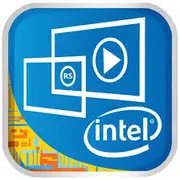Intel Core m3-7Y32

Intel Core m3-7Y32 in 2025: Is It Worth Buying a Laptop with This Processor?
Analysis for Practitioners: Architecture, Performance, Battery Life, and Use Cases
Architecture and Manufacturing Process: Compactness at the Expense of Power
The Intel Core m3-7Y32 processor, released in 2017, is based on the Kaby Lake microarchitecture and manufactured using a 14-nm process. It is a dual-core chip with Hyper-Threading support, providing 4 threads for parallel tasks. The base frequency is 1.1 GHz, with a maximum boost in turbo mode of 3.0 GHz. The integrated graphics, Intel HD Graphics 615 (maximum frequency — 900 MHz), can handle basic tasks but is not designed for heavy workloads.
Architecture Features:
- Energy efficiency: optimized for ultra-thin devices.
- Passive cooling: many laptops with this CPU operate without fans.
- Limited boost: turbo mode activates only under low temperature and brief loads (e.g., opening an application).
Power Consumption and TDP: Why 4.5 W Is Low?
The TDP (Thermal Design Power) of 4.5 W is a key feature of the Core m3-7Y32. This allows:
- Creating laptops that are thinner than 13 mm.
- Using compact batteries (30–40 Wh) with a battery life of 8–10 hours.
- Operating without active cooling, reducing noise and weight.
However, the low TDP limits performance: under prolonged load (e.g., video rendering), the frequency drops to the base 1.1 GHz to avoid overheating.
Performance: What Can This Processor Actually Handle?
Results from Geekbench 6 (Single-Core: 872, Multi-Core: 1673) show that this chip lags behind even budget contemporary CPUs like the Intel Core i3-1215U (Single-Core: ~1500). However, it remains relevant for specific scenarios:
- Office Work:
- Working simultaneously with 10+ tabs in Chrome, Word, and Excel documents.
- Viewing PDF files and Zoom conferences without lag (provided background rendering is not activated).
- Multimedia:
- Playing 4K video (through hardware acceleration).
- Editing photos in Lightroom (with delays when applying filters).
- Gaming:
- Older games: CS:GO on low settings (720p, 30–40 FPS).
- Indie projects: Stardew Valley, Hollow Knight — consistently 60 FPS.
Turbo Boost mode (up to 3.0 GHz) helps with short tasks: OS bootup, opening “heavy” websites. However, after 20–30 seconds, the frequency drops to 1.6–2.0 GHz.
Use Cases: Who Would Suit the Core m3-7Y32 in 2025?
This processor is a choice for the secondary market and budget new devices (laptop prices: $300–450). Ideal users include:
- Students: for lectures, writing papers, and watching classes.
- Office Workers: handling emails, spreadsheets, and presentations.
- Travelers: compact laptops with long battery life.
Not suitable for:
- Freelancers working in Photoshop or Premiere Pro.
- Gamers (except retro game enthusiasts).
- Engineers who need CAD software.
Battery Life: How Does 4.5W TDP Affect Work Time?
Laptops with the Core m3-7Y32 in 2025 will offer 7–10 hours of usage with moderate use (brightness 50%, Wi-Fi, office tasks). This is facilitated by:
- Speed Shift technology: dynamic frequency management for reducing power consumption.
- Windows Power Saver mode: limiting background processes.
- Passive cooling: absence of a fan saves up to 5–7% of battery.
Tip: Disable Turbo Boost in power settings — this adds 1–2 hours of battery life at the cost of slight slowdowns.
Comparison with Competitors: What to Choose Instead of Core m3-7Y32?
- AMD Athlon Silver 7120U (2023): 2 cores/2 threads, 15W TDP. Better for multi-threading (Geekbench 6 Multi-Core: ~1900), but 20% lower battery life.
- Apple M1 (2020): Single-Core: 2300, Multi-Core: 8300. The used MacBook Air M1 costs $500–600 — 1.5 times more powerful.
- Intel Core i3-1115G4 (2020): 2 cores/4 threads, 15W TDP. Geekbench 6 Multi-Core: ~2500. Suitable for the same tasks, but requires active cooling.
Conclusion: The Core m3-7Y32 falls behind even budget CPUs from 2023–2024, but it excels in price and noiseless operation.
Pros and Cons: When to Buy and When to Pass
Strengths:
- Ultraportability: laptops starting at 900 g.
- Quiet operation: no fan noise.
- Affordable price: new devices from $300.
Weaknesses:
- Low performance in multitasking.
- Does not support modern standards like Wi-Fi 6E or Thunderbolt 4.
- Limited upgrades: RAM and SSD are often soldered to the board.
Laptop Selection Recommendations
Look for devices in the ultrabook or convertible categories with the following features:
- Screen: IPS matrix with a resolution of 1920×1080. Avoid TN screens.
- RAM: at least 8 GB (preferably 16 GB if you plan to keep the device for 3–4 years).
- Storage: SSD from 256 GB (SATA or NVMe).
- Ports: USB-C with charging support, HDMI for projectors.
Example models for 2025:
- Lenovo IdeaPad Flex 3i: 12-inch convertible, 8 GB RAM, 256 GB SSD — $349.
- HP Pavilion x360: 13.3-inch screen, stylus included — $399.
Final Conclusion: Who Should Consider the Core m3-7Y32?
This processor is an option for those who value portability and silence over power. In 2025, it should only be considered as a budget solution for:
- Buying a first laptop for a child.
- A backup device while traveling.
- Working with texts and spreadsheets without complex tasks.
Key benefit: For $300–400, you can get a new, lightweight laptop with Windows 11 that will meet basic needs. However, if the budget allows an additional $150–200, opt for models with Intel Core i3 12th generation or AMD Ryzen 3 7300U: they will last longer and not disappoint in multitasking.
Basic
CPU Specifications
Memory Specifications
GPU Specifications
Miscellaneous
Benchmarks
Compared to Other CPU
Share in social media
Or Link To Us
<a href="https://cputronic.com/en/cpu/intel-core-m3-7y32" target="_blank">Intel Core m3-7Y32</a>